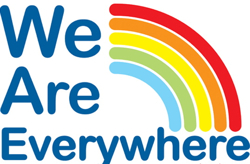
Everywhere. Well, almost everywhere. We work with early adopter teachers, students, interested parents, and administrators to build a learning community open to new ideas and practices. We don’t start with overwhelmed teachers or those uncomfortable with change. We return to collaborate with them individually, honoring their contributions while working to adapt their practices when possible.
Working organically, we nurture our risk takers and spread their ideas by publically celebrating best practice instructional strategies and assessments. As is written all over the edublogosphere, we must do everything possible to bring the administrators on board to provide the leadership and modeling of the instructional strategies that lead to the skill and concept-based learning our students need.
The meeting rooms to start the conversations where our curriculum reviews take place are pivotal to starting the shifting process. This is followed up by team and department meetings where lessons are finalized for the classroom.
Two key leaders are your instructional technologist and library media specialist. They can be a big part of being in many places to make the shift happen.
Image Source
October 21, 2008 at 8:53 pm
David, I really like the line “publically celebrating best practice instructional strategies and assessments”. I feel that we need to do more of this. Often I have a lot of trouble showing teachers and leaders that the use of technologies that empower students to create, connect, share, network and communicate their ideas will result in the outcomes that they are looking for. Sometimes these teachers and leaders are quite shallowly looking for just improved test scores as that is what their stakeholders want from them.
I feel we need some more of the “artifacts” that you refer to above. I really want to be able to point to these and show that we can produce more successful 21st century citizens by encouraging online sharing via blogs and wikis, creation of multimodal projects etc.
I am interested to get references that link these strategies with successful outcomes.
October 22, 2008 at 3:09 am
Hi Paul,
Yes, we definitely need the artifacts that demonstrate the learning strategies that work. I am pushing that we really put forth real classroom instructional strategies on SOS. And you hit on another discussion topic for SOS (you have a knack for it). How to demonstrate that shifted instruction makes a difference in learning? But as you infer, test scores often don’t measure the learning we are aiming for.
As for examples of strategies that work, here is a link to a “Best Practices” page of our Teacher Toolkit from HKIS where we would share and celebrate innovative ideas and strategies. Thanks for jogging my memory. 🙂
Best Practices: http://dragonnet.hkis.edu.hk/up/toolkit/sec/bestpract.htm